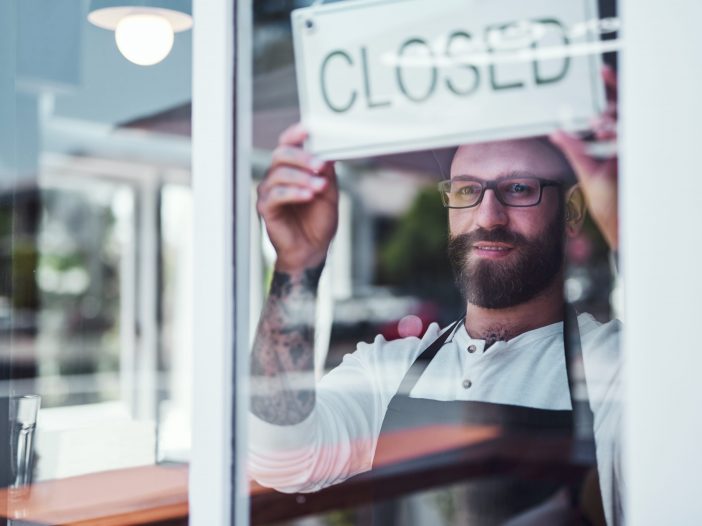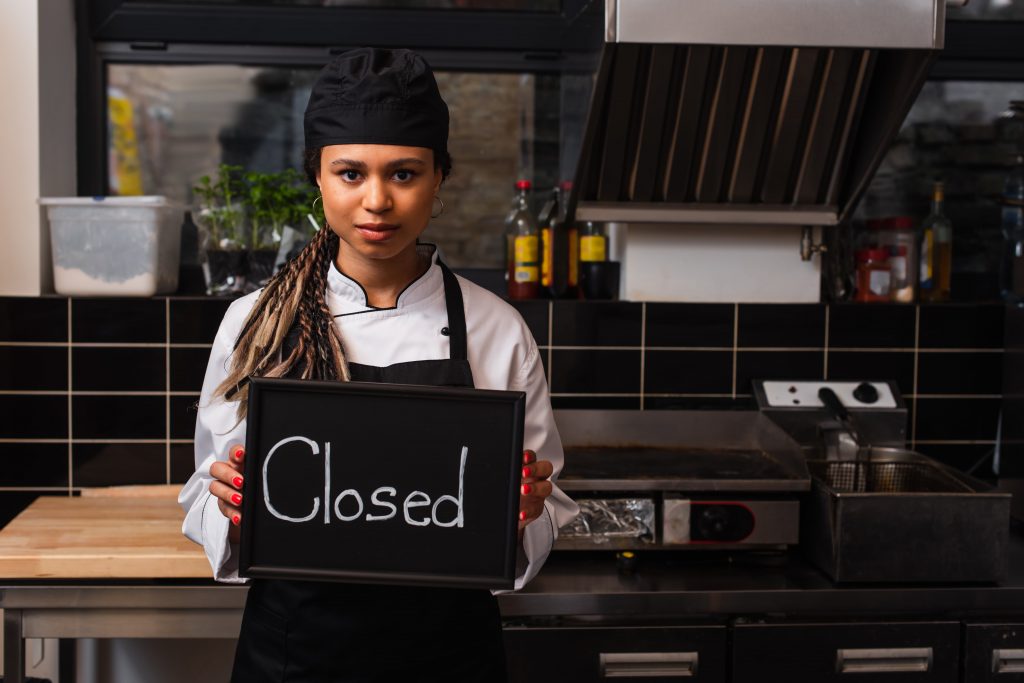
When the clock hits closing time, do you draw a hard line, or do you allow a little wiggle room? This is one of those questions that every business—whether a cozy café or a bustling retail store—grapples with. Let’s get real: customers don’t always finish their business by the time you’re ready to close up. But deciding how long to let them linger can make a surprising difference to your bottom line.
So, how long do you let your customers stay past closing? It all boils down to balancing customer happiness with keeping costs in check.

1. Customer Retention and Closing Hours
Why Keep the Doors Open a Little Longer?
Here’s the thing: customers remember the places that make them feel welcome. A report by PwC found that 86% of buyers are willing to pay more for a positive experience. When a business lets customers stay just a bit past closing—say, 15 to 30 minutes—it can leave them with a positive impression.
Letting them linger that extra few minutes could be the difference between a one-time visit and a repeat customer. And here’s the kicker: studies show that a mere 5% boost in retention can increase profits by as much as 75%. In other words, those few extra minutes might pay off more than you think.
Cost of Keeping Customers Happy
The flip side? Extending those hours isn’t free. Each extra minute past closing is money. Staff often work overtime, lights stay on, and operational costs tick up. For example, labor expenses increase if employees stay longer to accommodate late customers.
Is it worth it? That depends on the business type and the value of each customer. Data shows that repeat customers spend 33% more per order than new customers. So if you’re running a place where repeat business is critical, letting customers stay a bit longer might actually help offset those additional costs over time.
2. Industry Standards and Norms
Let’s get practical: not every industry treats closing time the same. Here’s a quick rundown of how different businesses handle it:
- Restaurants: Ever stayed in a restaurant long after you paid the bill? That’s because many restaurants let you stay longer, often up to an hour after closing, as long as staff aren’t waiting on you to leave. They get that loyal customers are a huge part of their business.
- Retail Stores: Stores tend to be more strict. At most, they may give you a 10–15 minute grace period to finish up. Customer retention matters here too, but stores can’t always afford to stay open late, especially when retail employees are on hourly wages.
- Gyms and Fitness Centers: Some gyms and fitness centers are open 24/7, but even if they have set closing hours, they usually allow a short grace period for people to finish up their workouts.
So, how long should you let your customers stay past closing? If you’re in a service-heavy field like restaurants or hospitality, a longer grace period could be worth it.
3. Customer Loyalty Programs: Are They the Solution?
Want a way to keep those late-staying customers coming back without the added operational costs? Loyalty programs are a smart move. These programs incentivize repeat visits, making customers feel like they’re part of a special group. And businesses with robust loyalty programs typically see higher revenue from repeat customers—which means that the few extra minutes you give them aren’t just free, they’re profitable.
Some examples of loyalty incentives you could offer:
- Discounts for purchases made after 9 PM (or whenever business typically slows down).
- Exclusive after-hours events for loyalty members only.
- Special rewards for off-peak visits.
The result? Customers get perks, feel valued, and have a reason to respect closing hours—because they know they’re getting something in return. And as customer retention stats go, a 2% retention boost can impact profits as much as a 10% cost reduction.
4. Customer Expectations
Customers today have high standards, but they also value experiences. If a customer gets nudged out the door as soon as the clock strikes closing, they might not come back. In fact, 60% of consumers would stop doing business with a company after just one negative experience.
There’s also the social media factor. People don’t hesitate to leave online reviews, and if your place has a reputation for customer service, you don’t want to ruin that over a few minutes past closing. The takeaway here? Meet customer expectations—sometimes even exceeding them—without stretching your resources thin.
5. Best Practices: Finding the Balance
Here are some strategies to balance customer service with business needs:
- Set Clear Expectations: Post your closing times visibly and announce closing time reminders 15–20 minutes beforehand. This gives people time to finish up.
- Define a Grace Period: Let customers know how long they can stay after closing. For example, “We lock doors at 9 PM but allow a 10-minute grace period for final purchases.”
- Train Your Team: Staff should be on the same page. They need to understand when it’s okay to let customers stay and when to politely wrap things up.
- Encourage Off-Peak Visits: Through loyalty programs, discount offers, or even off-peak specials, encourage customers to visit during quieter hours.
- Limit Post-Closing Services: You can allow customers to finish up but avoid offering additional services after closing.
Each business is unique, so think about what makes sense for your customer base and your team.
Real-World Example
Starbucks has an interesting approach to customer retention and closing hours. They let customers stay past closing in certain cases, especially in high-traffic locations, where the “third place” philosophy (creating a cozy space outside home and work) takes priority. By creating this welcoming space, they keep customers coming back.
However, they set clear rules to ensure that closing doesn’t turn into an all-nighter. For instance, they turn off Wi-Fi and start cleaning up, so it’s a subtle way to signal the day is done. This approach allows them to serve customer needs while respecting employee time.
Takeaways
So, how long should you let your customers stay past closing? Here’s the crux:
- Assess Your Customer Base: Restaurants might allow up to an hour, while retail stores stick closer to 10–15 minutes.
- Customer Experience Matters: People remember businesses that let them finish in peace—and they’re more likely to come back.
- Operational Costs Add Up: Calculate the costs of keeping staff overtime versus the potential customer loyalty benefit.
- Consider Loyalty Programs: These can add value without keeping the doors open longer than needed.
If you’re wondering how to increase customer loyalty for your business, consider creating a dedicated online space. With resources like Laparizone, you can find inspiration, insights, and ideas on building a more engaging customer experience. Dive into our latest posts to discover practical tips to connect with your audience—whether they’re in your store, on your website, or hanging out long after hours.
FAQs
How long is a typical grace period after closing?
It varies by business. Restaurants might offer up to an hour, while retail stores usually stick to around 10–15 minutes.
Are there ways to encourage customers to finish up on time?
Yes. Make sure closing times are visible, announce them to customers ahead of time, and gently wrap things up without rushing anyone.
Is it worth offering loyalty programs for late customers?
Yes, loyalty programs encourage repeat business, especially for late-night visits, without necessarily keeping staff overtime.
Do customer reviews matter if I ask customers to leave?
Absolutely. Negative reviews about rushed service at closing can hurt a business, so a polite and patient approach is best.
Remember, knowing your audience and setting clear expectations helps avoid awkward moments at closing time. And if you’re looking for tips on creating a more welcoming space, check out the resources over at Laparizone. Let’s keep customers coming back—even if they linger just a bit too long.
Final Thoughts:
Letting customers linger past closing isn’t about pushing your operational limits but about keeping that door to loyalty slightly open. It’s like letting them feel welcomed, even in those extra 15 minutes after hours, which can be a small investment with significant returns. But remember, balance matters—customer satisfaction needs to align with your team’s well-being and your bottom line.
Got more insights on this? Check out Laparizone for events and tips on keeping your guests happy without sacrificing efficiency.









